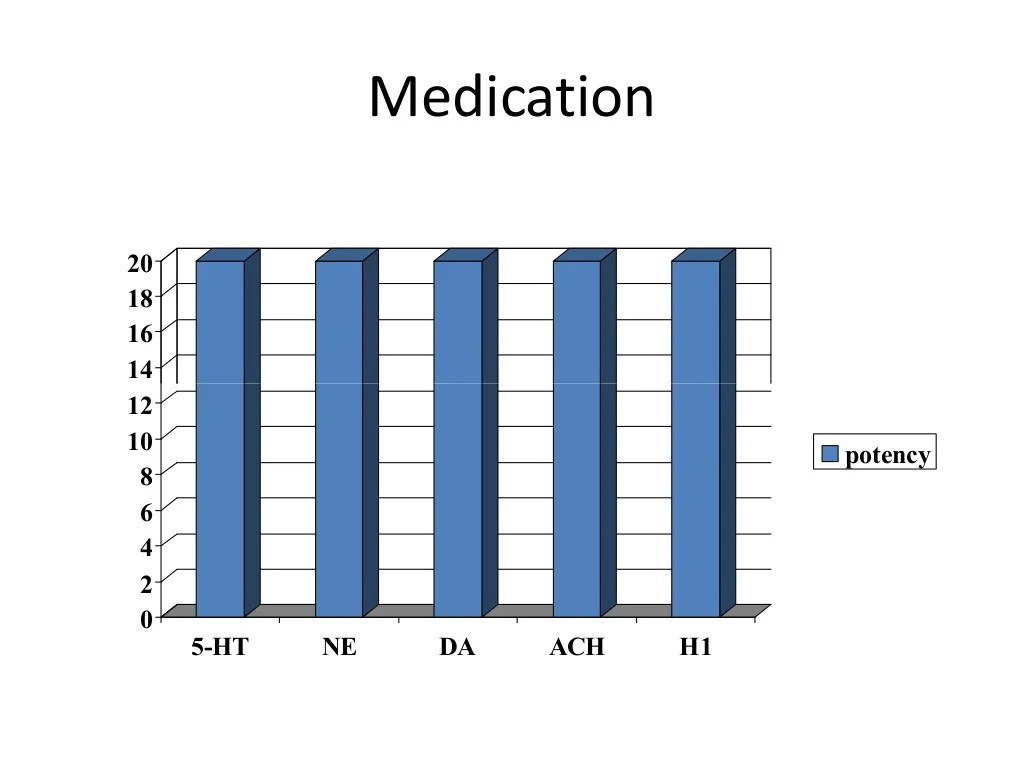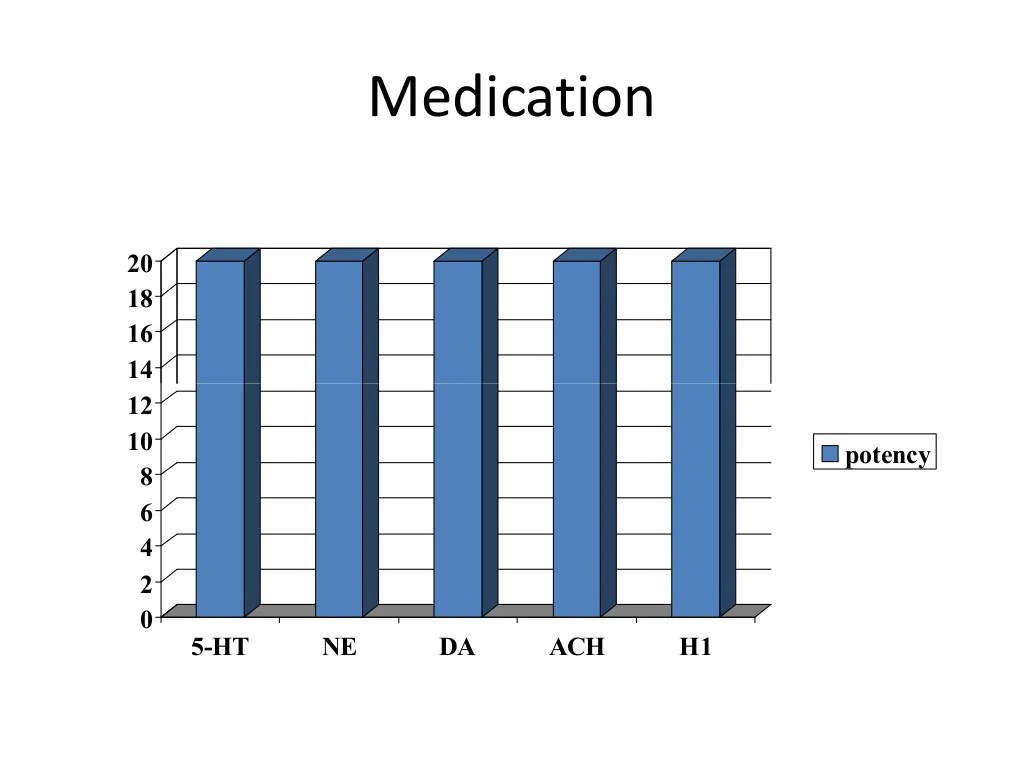Will taking the pill while pregnant harm the baby? This crucial question demands careful consideration. Pregnancy is a delicate time, and any medication, even seemingly harmless ones like birth control pills, can potentially affect the developing fetus. Understanding the risks and benefits is paramount for making informed decisions. This exploration delves into the complexities of medication safety during pregnancy, focusing specifically on oral contraceptives and the potential impacts on a growing baby.
We’ll also discuss the vital role of consulting a healthcare professional and exploring alternative approaches to managing potential issues.
The different types of birth control pills, their active ingredients, and their potential effects on pregnancy will be examined. A table comparing different pill types with their potential effects on pregnancy will aid in understanding the nuances. Further, the importance of open communication with your doctor, and exploring alternative methods to manage potential concerns, will be highlighted.
Understanding the Risks and Safety of Medications During Pregnancy: Will Taking The Pill While Pregnant Harm The Baby
Taking medications during pregnancy requires careful consideration. A developing fetus is particularly vulnerable to the effects of drugs, and even seemingly harmless medications can pose risks. This is why consulting with a healthcare professional is crucial before taking any medication, herbal supplement, or over-the-counter remedy during pregnancy. This article explores the general principles of medication safety during pregnancy, potential risks, and important considerations.Pregnancy is a time of significant physiological changes, and the body’s ability to metabolize and eliminate medications can be altered.
These changes, combined with the developing fetus’s unique vulnerability, highlight the importance of responsible medication use during pregnancy. Understanding the potential risks and benefits of different medications is vital for both the mother and the child.
Wondering if taking certain medications during pregnancy could affect your little one? It’s a valid concern, and the effects of taking pills while pregnant can vary greatly. While it’s essential to consult a doctor for personalized advice, some studies suggest that regular exercise, like lifting weights, might help you sleep better, which can be crucial for a healthy pregnancy.
This could indirectly impact the overall well-being of the developing baby. Ultimately, the safest approach to understanding the impact of medications on your pregnancy is always to speak with your doctor or a qualified healthcare professional. lifting weights might help you sleep better This will help you determine if a particular medication is suitable for your pregnancy.
General Principles of Medication Safety During Pregnancy
Careful consideration and consultation with healthcare professionals are essential when taking any medication during pregnancy. A developing fetus is more susceptible to the effects of drugs compared to an adult. The developing organs and systems are particularly vulnerable, and the impact of a medication can be unpredictable.
Potential Risks Associated with Medications During Pregnancy
Taking any medication during pregnancy carries potential risks. These risks vary depending on the specific medication, the stage of pregnancy, and the individual’s health. Factors such as dosage, frequency, and duration of use all play a role. The developing fetus’s immature organs and systems may be especially sensitive to the effects of medications, potentially leading to birth defects, developmental delays, or other complications.
Examples of Medications Known to Be Harmful to a Developing Fetus
Certain medications are known to pose significant risks to a developing fetus. These include some anti-depressants, certain anti-epileptic drugs, and some antibiotics. The specific risks vary, and it is important to discuss these potential risks with a healthcare provider. Always disclose all medications being taken, including over-the-counter drugs, herbal remedies, and supplements.
Importance of Consulting a Healthcare Professional Before Taking Any Medication During Pregnancy
Before taking any medication during pregnancy, it is crucial to consult a healthcare professional. This consultation ensures that the potential benefits of the medication outweigh the potential risks to the developing fetus. The healthcare provider can assess the specific circumstances and provide personalized recommendations.
Comparing Potential Benefits and Risks of Different Medications During Pregnancy
The decision of whether or not to take a medication during pregnancy involves a careful comparison of potential benefits and risks. The potential benefits must be weighed against the potential harm to the developing fetus. For example, a medication might be essential for managing a chronic condition in the mother, but the risks to the fetus need to be considered.
Open communication and careful evaluation with the healthcare provider are essential.
Table Outlining Medication Categories and Potential Impact on Pregnancy, Will taking the pill while pregnant harm the baby
| Medication Category | Potential Impact | Potential Risks |
|---|---|---|
| Anti-inflammatory Drugs | May cause premature closure of the ductus arteriosus in the fetus. | Potential for heart defects and other complications in the developing fetus. |
| Anti-depressants | May cause birth defects, particularly in the first trimester. | Withdrawal symptoms in the newborn. |
| Anti-epileptic Drugs | May increase the risk of neural tube defects and other birth defects. | Potential for developmental delays in the child. |
| Certain Antibiotics | May cause potential developmental delays. | Some may cross the placenta and impact the developing organs. |
| Vitamins and Supplements | Some supplements can be harmful if taken in high doses. | May interact with other medications or cause adverse effects. |
Specific Considerations for “The Pill”

Understanding the potential risks and benefits of oral contraceptives during pregnancy is crucial. While the pill is highly effective for preventing pregnancy in healthy individuals, its impact on a developing fetus warrants careful consideration. This section delves into the various types of oral contraceptives, their active ingredients, and potential effects on pregnancy.Oral contraceptives, commonly known as “the pill,” come in different formulations and delivery methods.
These formulations influence the hormones used and their potential effects on the body. A thorough understanding of these nuances is essential for informed decision-making.
Different Types of Oral Contraceptives
Various types of oral contraceptives exist, categorized by the combination of hormones they contain. These formulations, including combination pills and progestin-only pills, use different hormone combinations to achieve their intended effect. The choice of pill type often depends on individual needs and health considerations.
- Combination pills:
- These contain both estrogen and progestin, mimicking the natural hormonal balance in the body. They prevent ovulation, thicken cervical mucus, and alter the uterine lining, thereby making pregnancy less likely.
- Progestin-only pills:
- These contain only progestin. They primarily work by altering cervical mucus and the uterine lining. They might be a better option for women who cannot take estrogen or who are breastfeeding.
Active Ingredients in Oral Contraceptives
The active ingredients in oral contraceptives play a pivotal role in their effectiveness. Knowing these ingredients helps to understand the potential impact on a developing fetus.
- Estrogen:
- Common types include ethinyl estradiol. Estrogen plays a crucial role in regulating various bodily functions. Its presence in oral contraceptives is crucial for their effectiveness.
- Progestins:
- Various progestins are used, such as norethindrone, levonorgestrel, and drospirenone. These hormones work synergistically with estrogen in combination pills to prevent pregnancy. Different progestins can have varying effects on the body.
Potential Impact on a Developing Fetus
The presence of estrogen and progestin in oral contraceptives can potentially impact a developing fetus. However, the extent of this impact remains a subject of ongoing research. Furthermore, individual responses to these hormones can vary greatly.
- Potential mechanisms of impact:
- The exact mechanisms by which these hormones might affect a developing fetus are not fully understood. However, possible pathways include hormonal disruption, altered blood flow, and indirect effects through the mother’s physiology.
Table Illustrating Different Pill Types and Potential Effects
The table below summarizes the different types of birth control pills and their potential effects on pregnancy. It’s important to remember that this is not an exhaustive list and individual responses can vary.
| Pill Type | Active Ingredients | Potential Effects on Pregnancy |
|---|---|---|
| Combination Pill (e.g., Loestrin 24 Fe) | Ethinyl estradiol and norethindrone | Potentially affecting blood flow and hormone levels in the mother. The extent of impact on the developing fetus remains a topic of research. |
| Progestin-only Pill (e.g., Micronor) | Norethindrone | Potentially altering the uterine lining and cervical mucus. The effect on the developing fetus may differ from combination pills. |
Importance of Doctor Consultation
Navigating pregnancy can be a whirlwind of emotions and decisions. One critical area that often requires careful consideration is the use of medications. Understanding the potential impact on both you and your developing baby necessitates a proactive approach involving your healthcare provider. A doctor’s guidance is invaluable in assessing risks and selecting the safest course of action.A doctor’s expertise is paramount during pregnancy.
They possess the knowledge and experience to evaluate individual circumstances and provide personalized recommendations for medication use. Their role extends beyond simply dispensing prescriptions; it involves comprehensive care, addressing potential concerns, and ensuring the well-being of both the mother and the baby.
Crucial Role of a Healthcare Provider
A healthcare provider acts as a trusted advisor, providing crucial support and guidance during pregnancy. Their knowledge of your medical history, current health status, and the specific needs of your pregnancy is essential. This personalized approach is crucial to making informed decisions regarding medication use.
Reasons for Doctor Consultation Before Taking Medication
A doctor’s consultation is essential for several reasons during pregnancy:
- Identifying Potential Risks: A doctor can assess the potential risks associated with taking a specific medication during pregnancy. They can weigh the potential benefits against the potential risks to both the mother and the developing baby. For example, some medications may have a higher risk of causing birth defects or other complications, while others may be safer, but still require careful monitoring.
- Evaluating Interactions with Existing Medications: A doctor can evaluate how a new medication might interact with any existing medications or supplements you’re currently taking. This is crucial because certain combinations can lead to harmful side effects or diminish the effectiveness of the medications. For example, taking an anti-inflammatory medication alongside a blood thinner can increase the risk of bleeding. It is vital to disclose all medications and supplements.
- Assessing Potential Side Effects: Doctors can evaluate potential side effects that a medication may have on both the mother and the baby. This is crucial because certain medications can lead to complications during pregnancy or during labor and delivery. For example, some medications can cause nausea, vomiting, or other gastrointestinal issues, which can be problematic during pregnancy.
- Monitoring Fetal Development: A doctor can monitor the development of the fetus throughout the pregnancy and adjust the treatment plan accordingly if necessary. For instance, a medication that was initially deemed safe might require adjustments or alternative options if there are any adverse effects on the baby’s growth or development.
- Providing Personalized Guidance: Every pregnancy is unique. A doctor can tailor their recommendations to your specific circumstances and medical history. For instance, a woman with a history of certain health conditions may require different medication strategies than someone with no such history.
Honesty with Your Doctor
Open and honest communication with your doctor is paramount. Complete disclosure of all medications, supplements, and herbal remedies, even those deemed “natural,” is essential. This comprehensive information allows your doctor to make well-informed decisions regarding your care and treatment. This also includes past medical conditions and allergies.
Questions to Ask Your Doctor
A list of essential questions to ask your doctor about medication use during pregnancy:
- What are the potential risks of taking this medication during my pregnancy?
- Are there any alternative medications that are safer?
- What are the potential side effects of this medication for both me and the baby?
- How will this medication be monitored during my pregnancy?
- Are there any precautions I need to take while taking this medication?
- What is the dosage and frequency of this medication that is appropriate for me during pregnancy?
- What are the risks of discontinuing this medication?
- What is the best course of action if I experience side effects?
- What are the potential long-term effects of this medication on my baby?
Personalized Guidance Based on Individual Circumstances
Your doctor will consider various factors when determining the best course of action regarding medication use. These factors include your overall health, the specific medication, and the stage of your pregnancy. For instance, a medication that might be safe in the first trimester could be considered a higher risk in the third. This individualized approach ensures the safest and most effective care possible.
Potential Alternatives and Management Strategies
Navigating pregnancy can bring forth a variety of physical and emotional changes, sometimes requiring medication. However, it’s crucial to explore all avenues for managing symptoms and conditions before resorting to pharmaceutical interventions, especially during pregnancy. Understanding alternative approaches and lifestyle modifications can lead to a healthier pregnancy journey and potentially reduce the need for medication altogether.Many symptoms experienced during pregnancy can be effectively managed without medication.
This often involves a holistic approach that addresses the underlying cause of the discomfort, coupled with non-pharmacological strategies and lifestyle modifications. Exploring alternative therapies and natural remedies in consultation with a healthcare professional can provide valuable support.
Alternative Methods for Managing Symptoms
Lifestyle adjustments can significantly impact the well-being of both the expectant mother and the developing fetus. Dietary changes, stress reduction techniques, and regular exercise are all crucial components of a healthy pregnancy. For example, managing nausea during early pregnancy can often be achieved through dietary modifications, such as avoiding strong smells and consuming small, frequent meals.
Non-Pharmacological Approaches to Support a Healthy Pregnancy
Various non-pharmacological approaches can effectively alleviate pregnancy-related symptoms and support overall well-being. These strategies encompass dietary adjustments, stress management techniques, and regular physical activity. A healthy diet rich in essential nutrients is crucial for both the mother’s and the baby’s development. Regular exercise, when appropriate, can help maintain physical fitness and alleviate some common discomforts.
Natural Remedies and Potential Effectiveness
Many natural remedies have been used traditionally to manage various pregnancy symptoms. Ginger, for example, is often recommended for nausea. However, it’s essential to consult a healthcare professional before using any natural remedy during pregnancy, as some may interact with prescribed medications or have potential side effects. Herbal supplements and other natural remedies should never be self-prescribed.
Lifestyle Modifications to Reduce Medication Need
Implementing lifestyle modifications can often reduce the need for medication. Maintaining a healthy diet, getting sufficient rest, and managing stress levels can significantly improve overall well-being. Adequate hydration, regular exercise (when appropriate), and stress-reducing techniques like meditation can significantly contribute to a more comfortable and healthy pregnancy. For instance, incorporating regular walks or gentle yoga into the daily routine can improve mood and energy levels, potentially reducing the need for mood-boosting medications.
Addressing the Underlying Cause of the Need for Medication
Understanding the root cause of a condition or symptom is crucial before considering any treatment, including medication. A healthcare professional can identify the underlying cause and guide the development of a tailored management plan. Addressing underlying issues like nutritional deficiencies, hormonal imbalances, or stress can often lead to symptom improvement without the use of medications.
Potential Alternative Therapies to Explore with a Doctor
Exploring alternative therapies alongside conventional medical care can be beneficial. A comprehensive discussion with a healthcare provider about these therapies is essential. The following is a non-exhaustive list of potential alternative therapies to explore with a doctor:
- Acupuncture: This ancient Chinese practice involves inserting thin needles into specific points on the body to stimulate energy flow and alleviate pain.
- Acupressure: Similar to acupuncture, acupressure involves applying pressure to specific points on the body to relieve pain and discomfort.
- Massage therapy: Gentle massage can help relax muscles, reduce stress, and improve circulation, promoting overall well-being.
- Yoga and/or Pilates: Gentle exercises and stretches can improve flexibility, reduce stress, and promote relaxation.
- Mindfulness and meditation: Practices focused on present-moment awareness can help manage stress and anxiety.
- Herbal remedies: Certain herbs may have therapeutic properties; however, consulting a doctor is critical before use.
Illustrative Case Studies and Scenarios

Navigating the complexities of medication use during pregnancy requires careful consideration of individual circumstances. Every pregnancy is unique, and what might be safe for one woman in one situation could pose risks in another. This section explores illustrative cases to highlight the importance of personalized medical advice and the potential for diverse outcomes.Understanding the risks and benefits of different approaches is crucial.
A nuanced understanding of each situation, including the specific medication, the stage of pregnancy, and the underlying health conditions, is essential for making informed decisions.
Scenario Where The Pill May Be Considered
A young woman, Sarah, is already on the combined oral contraceptive pill (COCP) for managing her acne and irregular periods. She discovers she is pregnant unexpectedly. Given her existing history of consistent use of the COCP and her current health status, her doctor might recommend continuing the COCP for a short period, under strict monitoring. The potential benefits of controlling her hormonal imbalances and reducing the risk of certain complications outweigh the potential risks for the developing fetus.
Wondering if taking the pill while pregnant could harm your baby? It’s a valid concern, and the best course of action is always to consult a healthcare professional. However, understanding how effective methods like condoms prevent the spread of STIs, like HIV, how condoms prevent hiv , can help inform your overall reproductive health choices.
Ultimately, the safety of the developing fetus during pregnancy should be a top priority, and a doctor’s guidance is crucial for any concerns about medications or other health issues.
This decision will be highly individualized, with ongoing assessment for potential side effects and adjustment of the medication regimen if necessary. The continuation of the pill would be a temporary measure until an alternative approach can be safely implemented.
Scenario Where Alternative Approaches Are More Suitable
Consider Emily, who is experiencing severe morning sickness during the first trimester of her pregnancy. She has never taken medication before, and the severity of her nausea is significantly impacting her overall health and well-being. Over-the-counter remedies may be ineffective in alleviating her symptoms. In this case, a doctor would likely recommend alternative approaches, such as lifestyle adjustments, dietary modifications, or specialized anti-nausea medications.
While some medications might seem innocuous, they could have unknown impacts on a developing fetus. The potential harm from a medication not specifically designed for pregnancy outweighs any perceived benefit, given the availability of other, safer options. The focus would be on finding safe and effective solutions to manage her symptoms without introducing unnecessary risks to the pregnancy.
Wondering if taking birth control pills during pregnancy could harm your baby? It’s definitely a concern, and a conversation you should have with your doctor. While there’s no definitive proof of harm, a healthy diet, including foods that promote weight gain like lean proteins and nutrient-rich fruits and vegetables, can support a healthy pregnancy. Learning about foods to help gain weight might be helpful for ensuring proper nutrition.
Ultimately, though, it’s crucial to prioritize open communication with your healthcare provider to address any concerns about medication use during pregnancy.
Importance of Informed Decisions About Medication Use During Pregnancy
Making decisions about medication use during pregnancy requires careful consideration of all potential risks and benefits. A comprehensive discussion with a healthcare provider is essential. Factors like the specific medication, the stage of pregnancy, and the woman’s overall health must be carefully evaluated. The decision-making process should be transparent and involve a thorough understanding of the possible consequences of each option.
Illustrative Table of Scenarios and Recommended Actions
| Scenario | Potential Risk | Recommended Action |
|---|---|---|
| Pregnant woman already on the combined oral contraceptive pill (COCP) experiencing irregular periods. | Potential for unknown effects on the developing fetus, if the pill is continued. | Consult with a doctor to discuss the potential risks and benefits of continuing the COCP. Monitor closely for any adverse effects. Consider alternative hormonal regulation methods, if possible. |
| Pregnant woman experiencing severe morning sickness during the first trimester, and over-the-counter remedies are ineffective. | Potential for harm from unapproved medications. | Consult a doctor for personalized treatment options, such as lifestyle adjustments, dietary modifications, or specialized anti-nausea medications. |
| Pregnant woman with a pre-existing medical condition requiring medication. | Potential for medication-related complications for both mother and fetus. | Consult a doctor for a comprehensive evaluation of the pre-existing condition and potential medication alternatives. Discuss risks and benefits of each medication option in relation to the pregnancy. |
Detailed Information on Specific Medications
Understanding the effects of medications during pregnancy is crucial for both the mother and the developing fetus. Every medication, even over-the-counter drugs, has the potential to cross the placenta and impact the baby. A thorough understanding of these effects, mechanisms, and monitoring strategies is vital for informed decision-making.Medication effects on a developing fetus can vary significantly depending on the specific drug, the stage of pregnancy, and the individual circumstances.
Factors like the mother’s overall health, the dosage, and the duration of use all play a role in determining the potential risks. This section delves into specific examples to illustrate the complexities of medication use during pregnancy.
Effects of Specific Medications on Pregnancy
Different medications affect the fetus in varying ways. Some medications may directly harm the developing organs, while others may interfere with normal physiological processes. The impact of a medication can range from subtle developmental delays to more severe birth defects. It is important to remember that the potential effects are not always immediately apparent, and long-term consequences may not become evident until later in the child’s life.
Mechanisms of Medication Effects on the Fetus
Medications can reach the fetus through the bloodstream, which passes through the placenta. The placenta acts as a filter, but not all substances are effectively blocked. The mechanisms by which medications impact the fetus are varied. Some drugs directly interfere with cell division and growth, while others can alter hormonal balances, leading to abnormal development. Factors like placental blood flow and the fetus’s own metabolic processes influence the concentration of the medication in the fetal circulation.
Importance of Careful Monitoring During Medication Use
Regular monitoring is essential during medication use in pregnancy. This involves close collaboration between the pregnant woman and her healthcare provider. Regular check-ups, blood tests, and ultrasounds can help track the developing fetus’s health and identify any potential problems early on. This allows for prompt intervention if needed, minimizing potential harm.
Comparison of Risks of Different Medications in Various Stages of Pregnancy
The risks associated with different medications vary depending on the stage of pregnancy. The developing organs and systems are most susceptible to damage during critical periods of development. For example, the first trimester is a crucial period for organogenesis, so medications taken during this time pose a higher risk of causing birth defects. As pregnancy progresses, the risk profile shifts, and the effects of medication can change.
Comprehensive Table of Medications and Their Detailed Effects
| Medication | Effect on Fetus | Stage of Pregnancy |
|---|---|---|
| Tetracycline | May cause discoloration of teeth and skeletal abnormalities | First trimester |
| Isotretinoin (Accutane) | Associated with severe birth defects, including craniofacial abnormalities and heart defects | First trimester |
| Valproic Acid | Increased risk of neural tube defects, such as spina bifida | First trimester |
| Lithium | May cause cardiac defects and other developmental issues | First trimester |
| Warfarin | Potential for hemorrhage in the fetus | Throughout pregnancy |
Concluding Remarks
In conclusion, the decision of whether or not to take birth control pills during pregnancy is a complex one that requires careful consideration. Consulting a healthcare provider is paramount for personalized guidance and risk assessment. Understanding the potential risks and benefits of different medications, exploring alternative management strategies, and prioritizing open communication with your doctor are all essential steps in making informed decisions about your health and the well-being of your baby.
Remember, a healthy pregnancy is a collaborative effort between you and your healthcare team.




























